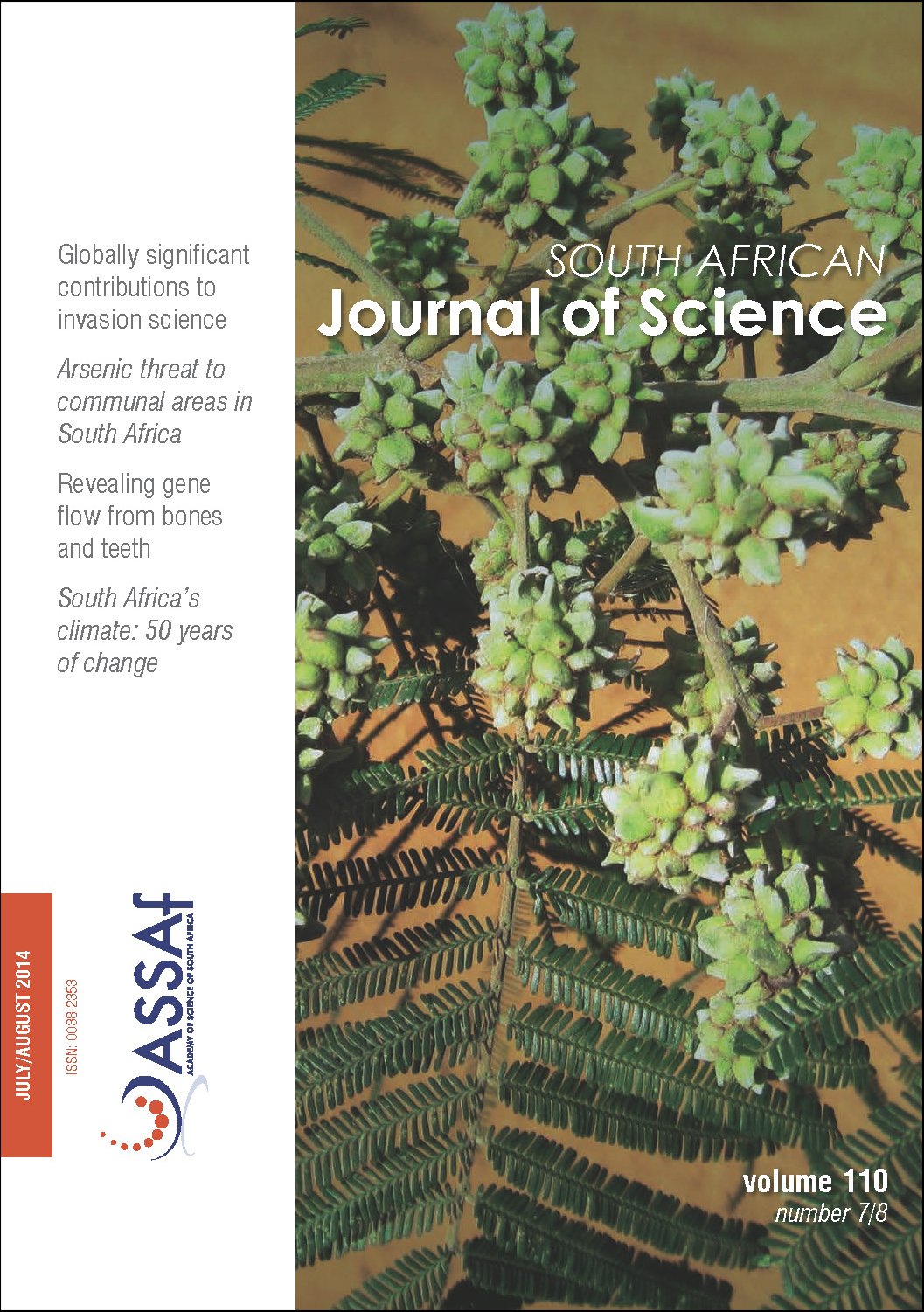A concise review of the applications of NiTi shape-memory alloys in composite materials
DOI:
https://doi.org/10.1590/sajs.2014/20130200Keywords:
composites, smart materials, shape-memory alloys, shape-memory effect, pseudoelasticityAbstract
Composite materials have increasingly been used in construction and in the aerospace and automotive industries because they are lightweight, strong and corrosion resistant, and because their anisotropic properties can be controlled; maintenance costs are also low. However, there is a growing demand for improved composite materials which have ‘smart’ capabilities, that is, they are able to sense, actuate and respond to the surrounding environment. Shape-memory alloys (SMAs) possess sensing and actuating functions. Embedding SMAs into composite materials can create smart or intelligent composites. Amongst the commercially available SMAs, NiTi alloys – in the form of wires, ribbons or particles – are the most widely used because of their excellent mechanical properties and shape-memory performance. These materials have found application in broad fields of engineering and science as a result of their superior thermomechanical properties. Here we review the use of NiTi SMAs in applications such as vibration control, shape control, position control and adaptive stiffening.
Published
Issue
Section
License

This work is licensed under a Creative Commons Attribution 4.0 International License.

All articles are published under a Creative Commons Attribution 4.0 International Licence
Copyright is retained by the authors. Readers are welcome to reproduce, share and adapt the content without permission provided the source is attributed.
Disclaimer: The publisher and editors accept no responsibility for statements made by the authors
How to Cite
- Abstract 594
- PDF 566
- EPUB 194
- XML 232












.png)